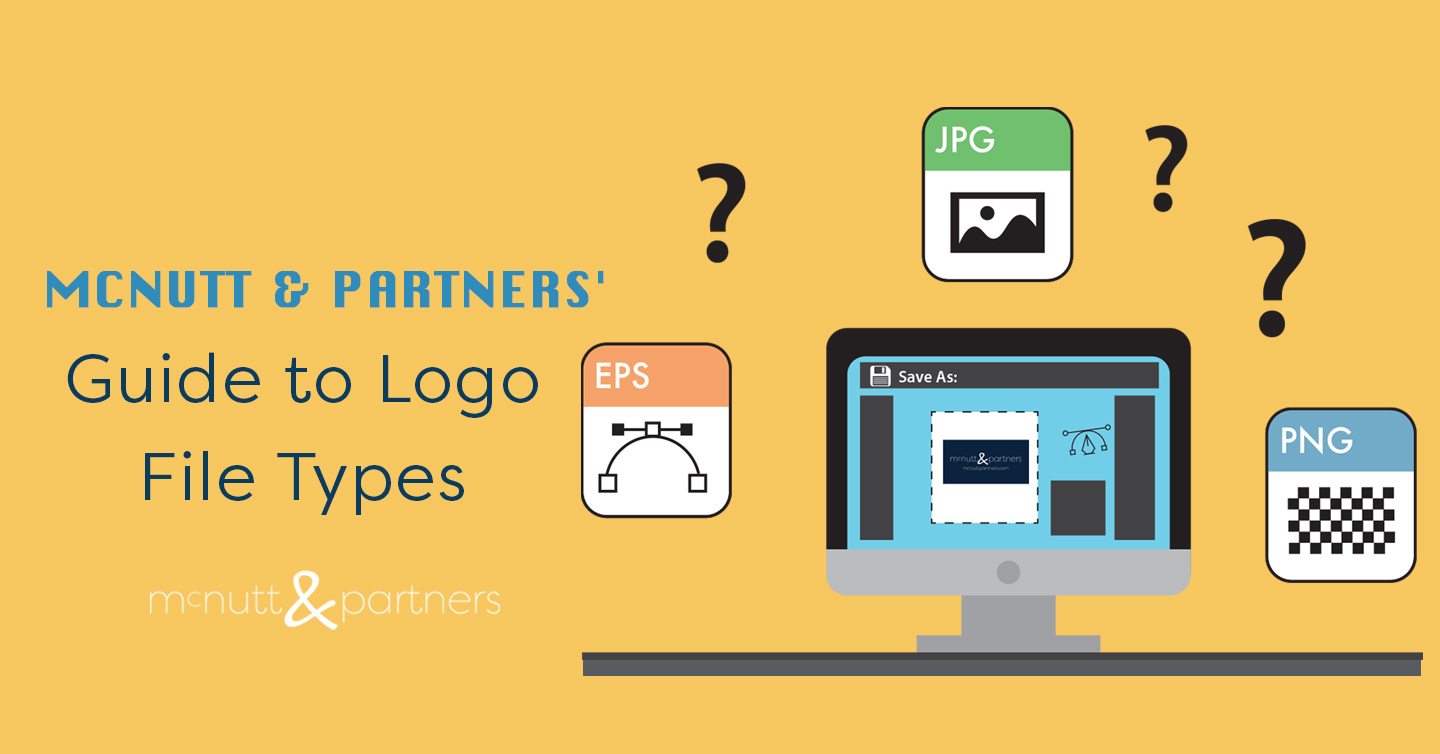Your logo is a visual representation of your brand’s persona, acting as a means of association between consumers and your product or service. With such an important role to play, it’s critical that your logo always looks its best—whether it’s being displayed digitally or in print. One way to ensure that your logo consistently comes out looking crisp and clean is to keep a folder on hand of various high-quality logo file types. That way, whether it’s someone on your team creating branded material or an external agency or designer, the customer makes the connection between your logo and brand.
Why are there different logo file types in the first place?
You might be thinking, “I have a .jpg of my logo. Isn’t that good enough?” The answer, quite frankly, is no—it might not be depending on what you are using it for. For example, if you are printing your logo large, say on a sign or billboard, then a vector-based logo is pretty much a requirement. Or, if you are displaying on a digital screen, then a raster graphic may be best.
The bottom line is, different creative platforms take better to different logo file types. The quality of your final product can and will be compromised if you are not using the best file type for said platform.
Wait, what’s a vector and a raster?
Two words you’ll need to be familiar with are “vector” and “raster.” While there’s an actual technical difference between the two that you can look further into if you’d like, the main difference to note here for our purposes are that vector images retain their quality when altering the size of the art, while raster images do not. Raster files must be saved at the exact dimensions needed for said purpose to eliminate the possibility of them grainy or unclear.
A guide to logo file types
.png
PNG stands for “Portable Network Graphic.” These raster file types are best for digital purposes, such as adding a logo to a website, app, online presentation, letterhead on digital documents, etc. As a benefit, PNG files may have transparent backgrounds, which can be good for layering on top of other images.
.ai
AI is Adobe Illustrator’s proprietary file format. It represents a file containing vector-based graphics on a single page. Vector elements are graphics that do not lose quality if you enlarge them, which means they are a common logo file type that is good for print media.
.eps
EPS (Encapsulated PostScript) is also a vector-based file type, similar to .ai. The .eps format is more versatile than .ai, however, being that it can be viewed on programs beyond Adobe Illustrator. This is better for people who may not have the programs that are compatible with .ai.
.psd
This is a Photoshop file and has layers that can be manipulated. It’s good for editing a logo that employs photos and creating graphics that do not need to be vector-based. If you are creating a logo and you use Photoshop, your file is a “raster graphic” and you will not be able to stretch your logo file to any size in the way that you could with a vector. Photoshop design is fairly easy, but in the long run it is better to use vector programs unless you know it’s only going to stay one size.
Signifying “Portable Document Format,” the PDF also comes from Adobe. It is most often used to display multiple pages of a document to maintain formatting across various devices; however, the PDF is frequently used to share images like logos. The vector-based .pdf file type also supports transparent backgrounds. Designers most often use PDF logos to create print materials and collateral like clothing and other branded products.
.jpg
Sometimes seen as .jpeg, this is the most common image file format. In terms of logo files, .jpg (a raster image type) is typically recommended only for images containing photographic or other highly-complex content. In almost all cases, we recommend using PNG over JPG for logs. Unlike some of the other logo file types, a .jpg will lose its quality every time it is decompressed or recompressed.
.gif/.mp4
There may be instances in which you want your logo to appear as animated, which is where the .gif and .mp4 formats come in. This can be a fun way to make your logo “move” on a video, website, online presentation and more.
Summary
We get it—that’s a lot of three-letter abbreviations! But hopefully this guide to logo file types at least offers some bit of clarity to the alphabet soup that can be logo files. The main thing we encourage is—if you have a file type that you don’t recognize or can’t open on your computer, don’t trash it! It could be useful to a designer or agency you have working on your behalf further down the road.
McNutt & Partners is a full-service advertising and digital marketing agency. Contact us today for your marketing needs! Call 334-521-1010, or visit our contact page.

